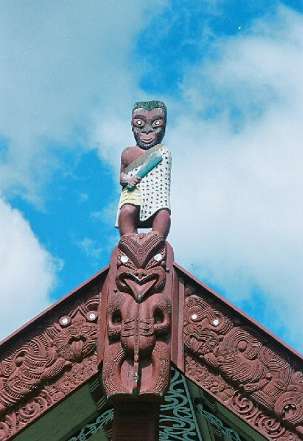Aotearoa- “The Land of the Long White Cloud”, these are the two major Islands in the south Pacific known as New Zealand.
The Māori tell ancient tales about the ancestor, who sailed from the homeland of Hawaiiki (and the place believed to be the source of life) on a waka, long wooden canoe. He came to Hawaiiki, describing Aotearoa as "a distant land, cloud-capped, with plenty of moisture, and a sweet-scented soil". The first Polynesian arrivals later on settled in the far north of New Zealand, at Hokianga.
Māori tribes sailed on their waka on to Aotearoa from various directions (Asia through the Philippines, Indonesia, West Polynesia, and East Polynesia). They established their Pa (village) on shores of New Zealand, between the great kingdom of the ocean- a treasury of food and for village life matter (clothes, crafts etc.) and next to the rich rainforest- a hunter’s aspiration and source of fire. The staple food was kumara (sweet potatoes) augmented by other vegetables and fish and by shellfish, birds and eels, and in the south, moa and seal meat. Tribal boundaries were defined by major landmarks such as sacred mountains and rivers.
In 1769, Captain James Cook circumnavigated the two main islands on the ship “Endeavour”. Cook found the Māori habits somewhat “primitive” and violent, as well as impressive and bravely spirited. He grasped this newfound land for the British crown.
This put a change to the lifestyle of the islanders. For many years the Māori converted their lifestyle to the teaching of the English nation. The Māori traditions and means were close to extinct. The Treaty of Waitangi was signed (1840) between the settlers (Pakeha) and the Māori to overcome the different arguments.
Those historical events have made a significant input to the development of the song and dance forms. It is the way of re-establishing the Māori identity for the tourism industry and for those who are brought up far from their cultural roots.


Next Page: Kapa Haka- The Maori Dance
View SlideShows on New Zealand:
Māori links:
http://www.maori.org.nz/kapahaka/
http://www.nzqa.govt.nz/for-maori/resources/mpa/nmd/introduction.html
http://www.creativenz.govt.nz/resources/toi-maori.pdf
http://teiho.org/Default.aspx?instanceID=223


